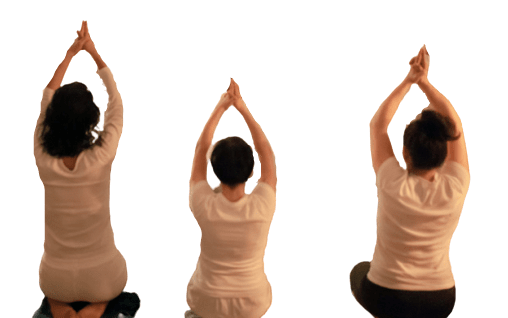The Sanskrit word Kundalini means ‘circular’, ‘annular’. It is also denoted as the coiled serpent which is remained in dormant form at the base of the spine. The word Shakti-Chala is the combination of the word Shakti which denotes the kundalini and the Chala the movement. Thus, the flow of kundalini up to the eyebrow center is Shakti Chala and The process is kundalini yoga.
Therefore, an energy needs to be straight from spiral form to get activated and circulated to the third eye from the root chakra finally reaching to the Crown Center. Even though the origin of Kundalini yoga is interconnected with the Tantra Yoga and Hatha Yoga, some yogis differentiate it from Hatha Yoga.
Kundalini Yoga is regarded as the combination of Bhakti Yoga, Shakti Yoga and Raja Yoga along with Kriyas and Meditation. It focuses on all these yogas for highly influential achievement or experience of Dharma or the Life Purpose liberating oneself from the Karma, the bondage of the life. Either Kundalini or Laya, both represent the same Yoga that is awakening the serpent energy.
Elucidating the concept and core of yoga, Laya Yoga an infallible relation to the goal of yoga. Ever effecting aura of yoga has been embraced with the meaning of Laya refers to ‘dissolution’, ‘absorption’, and ‘extinction’.
Based on the same principle of the absorption of the individual self to the supreme self through the process of specified yogic practices by circulating the quiescent energy to the top of the head from the base of the spine makes the Laya Yoga as one of the vital facets of Yoga.
The practice concentrates on kriyas and meditation to prepare the nervous system and balances the energy channels to make the possibility of the Kundalini energy to flow from the spine to the crown center.
The yoga asanas are designed to aim the activation of the certain center such as navel, crown, other chakra centers, and whole spine as well as the implication of Bandhas and Pranayamas to regulate the prana, the vital force, in a systematic manner to the higher part of the body.
The practice concerning on the elements of Patanjali’s Kriya Yoga such as Tapas (discipline or perseverance), Swadhyaya (spiritual study or self-study), and Ishwarpranidhan (Devotion to the God) are also practiced in Kundalini Yoga.
As a process of awakening the dormant energy, Kundalini Yoga has an undeviating relation and stimulus with the philosophical aspect of Shaktism and Tantric school of Yoga which incorporates the practice of yoga asana, pranayama, bandhas, and meditation.
In this sense, Hatha Yoga has the greater influence on Kundalini Yoga in that later comprises the ingredient of former in its practice and procedure to activate the latent energy supposed to be stationed at the base of the spine in a passive state.
The Yogic scriptures of around 15th century such as Hatha Yoga Pradipika and Shiv Samhita have been very influential texts to enhance the significance of the Kundalini Yoga.
Shiv Samhita has mentioned the implication of four yogas; Mantra, Hatha, Laya and Raja to lead oneself into the higher state of awareness and the liberating oneself from the labyrinth of duality.
Who Is Kundalini Yoga Suitable For?
Kundalini Yoga is one of the best yogic practices for the heightened and in-depth entrance into the intricacies of yoga going beyond the boundary of yoga asana. Still assembling the physical postural practice, it tends to concentrate on arising the chakra of the body working on pranic and subtle energy level.
With the specific orientation to activate chakra, the postures are set. The postures are performed to effect the energy of certain chakra in the combination of pranayama, bandhas, and meditation with visualization. It can be the best choice for the seekers who have better interest and inclination towards Chakra activation and its’ relations to the awakening of Kundalini Shakti.
Kundalini Yoga can be the fascinating and integral style for the spiritual practitioners who are inspired and dedicated to cleansing the energy channel and making the physical body as the bridge to reach to the state of liberation through its yogic association.
In General, Kundalini Yoga class is begun with mantra chanting, spinal stretching, and flexibility followed by particular asanas for chakras leading to the meditation and end of the class with closing songs or mantras. Even though Kundalini Yoga has its perennial history and link to the ancient yogic practice as guru-discipline tradition, it has been practiced in the different style and in many schools.
As long as the zest of Kundalini Yoga i.e. activating the kundalini energy is placed on high and intact, the style or pattern would not be discarded as not being a Kundalini Yoga. The Yoga which basically focuses on stimulating the energy center and awakening the Kundalini energy by its proper practice that is Kundalini Yoga in the broader sense.
For realizing the divine destiny of Kundalini Yoga, numerous schools of yoga have been running having carried slightly different philosophies but not forgetting the crux and fundamental aspects of Kundalini Yoga.
In the modern time, Yogi Bhajan has been perceived as the pioneer yogi who started Kundalini Yoga in 1969 in the west beguiling the principle of Healthy, Happy and Holy or 3HO by setting up an organization named Healthy Happy and Holy Organization.
Nevertheless, it is still the exotic and esoteric practice in Nepal and India revealed only to the disciples in a very specific and systematic way who are in strict and intensive Sadhana in the discipleship of a guru for few years at least.

